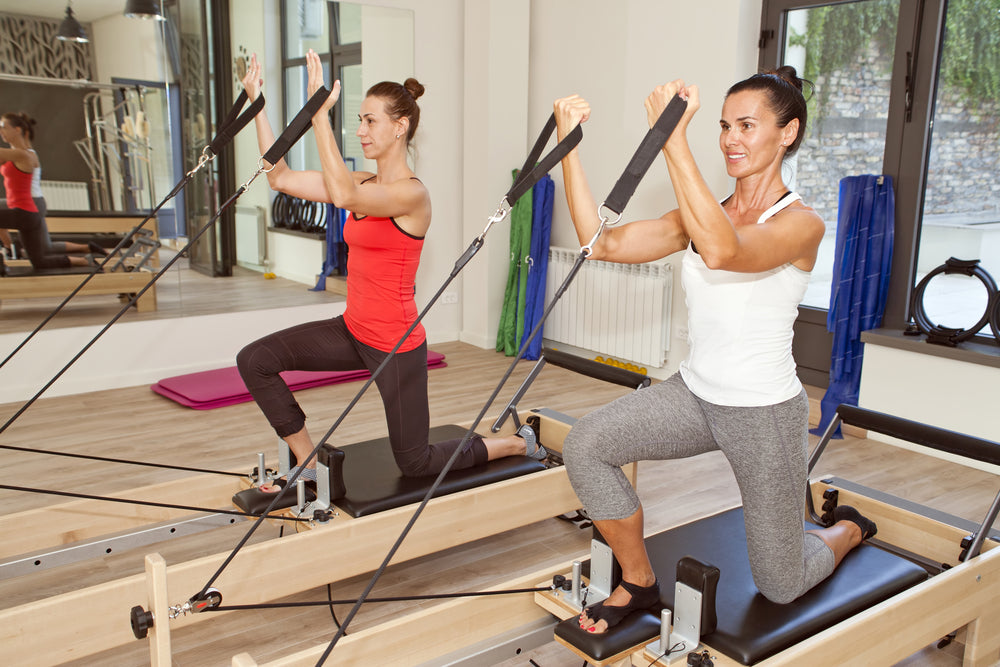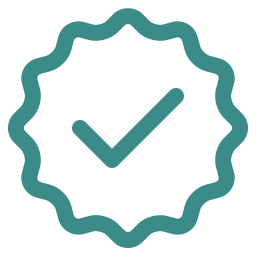Here’s why you shouldn’t confuse flexibility with mobility…
When someone tells you that you need to increase your mobility, what type of exercise comes to your mind?
We bet our bottom dollar that it’s stretching exercises.
It’s understandable, Pilates mobility and Pilates flexibility have been used interchangeably in the past. And that’s okay…
Well, until you get injured because you’ve been performing the wrong type of exercise.
Because in practice, mobility and flexibility are two different terms.
Each of them focuses on different structures that can dramatically affect your Pilates workout and your overall body function.
If you need to be more flexible but you keep focusing on Pilates mobility exercises, this can lead to muscle tightness and pain.
While on the other hand, if you practice Pilates flexibility all the time without any focus on mobility this can lead to muscle weakness.
This is why you see a lot of articles discussing mobility vs flexibility and the importance of differentiating them.
Because it’s not just about knowing the vocabulary. It’s about understanding the difference so that you can plan a better, healthier, and more dynamic Pilates workout on your Pilates reformer.
Mobility vs Flexibility: Are They Similar? Not Really…
Well, they seem similar because they’re often used interchangeably, even in the medical world.
But they’re not. And here's why…
Mobility is the ability of the structures in your body to be actively or passively moved to achieve a functional range of motion. It also pertains to your body’s ability to initiate, control, or sustain functional mobility - think movement.
Flexibility is your joint's ability to move smoothly and pain-free without restrictions. Which is dependent on the extensibility of your soft tissues (muscles, tendons, joint capsules, nerves, ligaments, etc).
We know… Too many unfamiliar terms and words.
Okay… Let’s simplify it.
So think of the time when you tried to reach your toes, and you were able to initiate and control your hips to bend forward - that's mobility.
Mobility in essence pertains to a movement that your body can freely perform without pain and stress.
But whether you can reach your toes or not is a question of how flexible you are.
So Why Is Pilates Mobility Important?
Have you ever suffered from an injury where you experienced hypomobility or limitation of motion? How did it make you feel?
Yup… That’s the reason why you need to invest in Pilates mobility exercises. It can impact your everyday activity and overall lifestyle.
Besides it being painful, suffering from hypomobility makes you feel powerless.
If your movement is limited, this can hinder you from doing the things you love to do and this can really impact you physically and emotionally.
Imagine…
Yesterday you were able to strongly work out on your Peak Pilates Casa™ Reformer Machine but today… You can't even scratch your nose without feeling frustrated or in pain.
What Causes Hypomobility?
- Prolong immobilization
- Muscle imbalance
- Sedentary lifestyle
- Muscle weakness
- Trauma to the tissue
- Deformities
How About Pilates Flexibility?...
We know that you already know how important flexibility is when working out on your Pilates cadillac.
This is the reason why Pilates stretching has been instilled into our minds when we started learning Pilates.
Flexibility is the backbone of Pilates exercises.
So Which Is More Important, Flexibility Or Mobility?
Neither of the two is more important than the other… Because flexibility and mobility work hand in hand.
They are both equally important in preventing injury.
Here Are Quick Pilates Flexibility And Mobility Exercises
Pilates Flexibility: Prevent injury… Keep those joints flexible!
1. Cat-Cow Stretch
We bet you’re already familiar with this exercise.
But do you know why cat-cow is such a popular stretching technique?
It’s because cat-cow is an effective way of opening your spine to improve your shoulder’s flexibility while strengthening your core muscles.
Here are the steps…
- Start on all fours position. Align your shoulder with your wrist and your hips with your knees; keep your toes pointing forward and your back in a neutral position parallel to the floor
- Inhale while simultaneously dropping your belly towards the floor, rolling your shoulder back, and extending your neck with your eyes towards the ceiling
- Exhale while simultaneously engaging your core muscles and arching your back. Move your head between your shoulders
- Do this 10-15 times or for 1 minute
2. Mermaid Stretch
We love this technique!
It targets muscles that are hard to stretch like your obliques.
Here are the steps…
- Sit on your mat and position both legs folded to your right side like a mermaid. The sole of your left foot should be resting on the inner part of your right thigh. Keep your right knee bent and flat on the mat.
- Extend your left arm and place your hand flat on the mat to support your body, keep your elbows extended
- Move your right arm away from your body towards your right ear, make sure that your palm is facing the ceiling and reach as far as you can to the opposite side. While doing this, bend your left elbow
- You may hold this position for 10-30 seconds for 5-10 repetitions
Pilates Mobility: Move with strength!
1. Side Circle
We’ll start with a simple yet effective side circle exercise that will strengthen your core and hip muscles.
Here are the steps…
- Lay on your left side and place your left arm under your head to act as a cushion. Place your right-hand flat on the mat to support your body
- Keep your lower extremities aligned with your upper body, forming a straight line
- Move your right leg towards the ceiling while maintaining your body in a straight line. You’ll feel your abdominal muscles contract
- With your right leg, draw 10 circles counterclockwise and clockwise. Perform the same exercises on your right leg
- Repeat 10 times on each leg
2. Shoulder Exercise on Peak Pilates
This might be a little challenging for you…
So don’t forget to practice Pilates breathing. Inhale every time you’re in the starting position then exhale while exerting effort.
Here are the steps…
- Sit on the carriage of your Peak Pilates with your legs crossed and facing the headrest
- To prepare your muscles, relax and take a deep breath. Inhale through your nose and exhale through your mouth
- Grab the right strap, extend your shoulder while keeping your arms straight and let your body move along with your shoulder
- Move your body and shoulder going towards your back. Imagine you’re drawing a big circle using the strap as your brush
- Repeat 10 times
Move For Mobility, Stretch For Flexibility
You’re probably thinking of the times when you exercised and did not even give a thought to whether you were doing Pilates flexibility or mobility.
But now that you know the difference, you can create a Pilates routine that your body truly needs!
If you feel confused next time, just remember: You move to gain mobility while you stretch for flexibility.
If you’re ready to be more flexible and mobile, then it’s time you check out our Pilates reformer catalogue.





